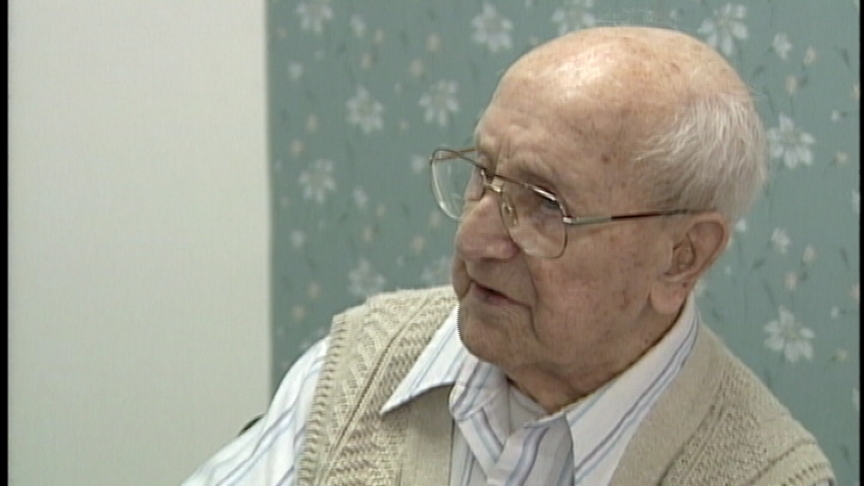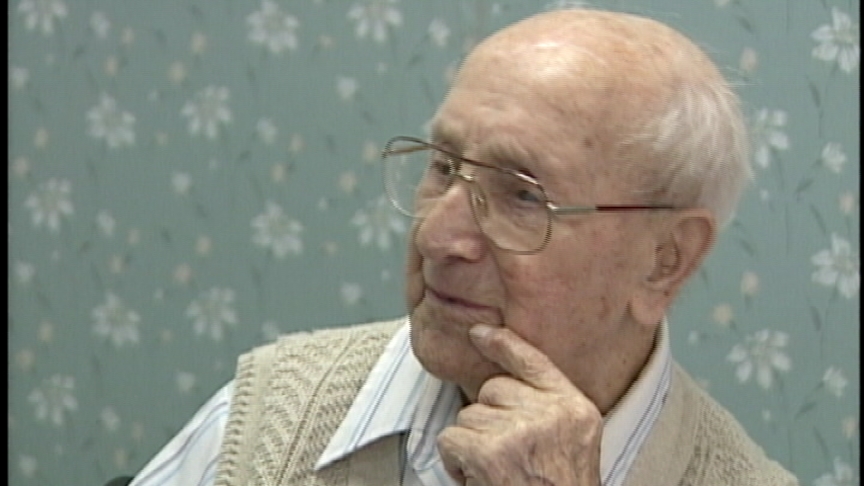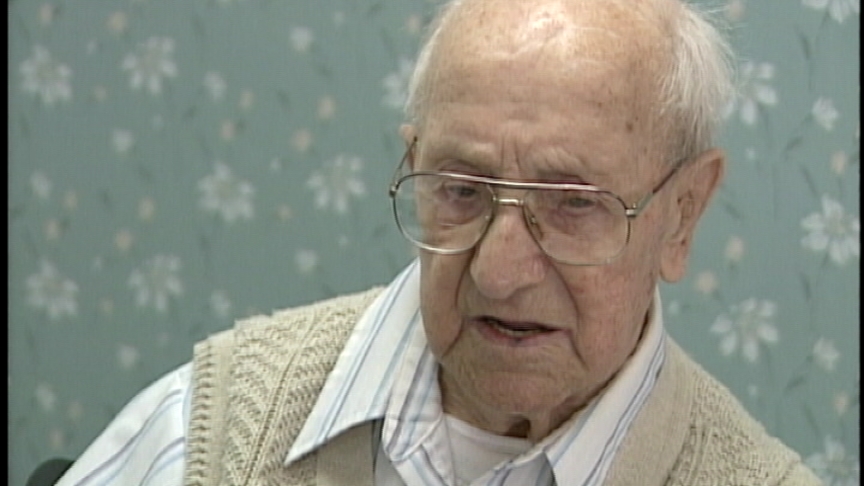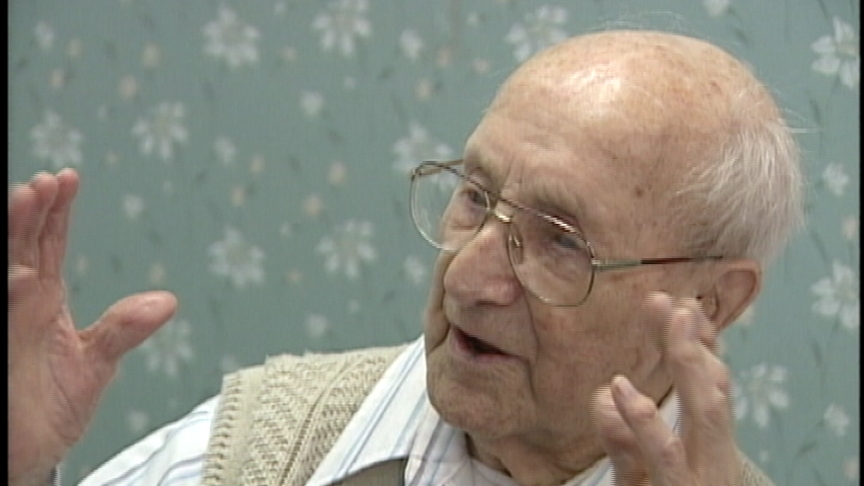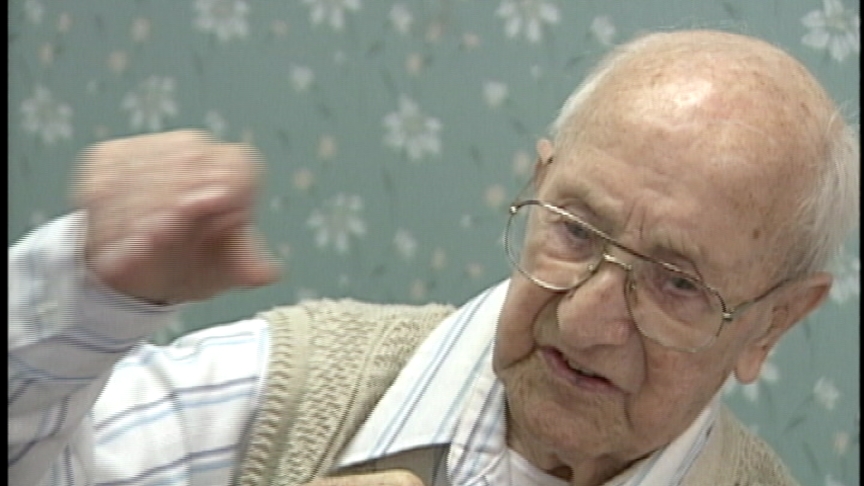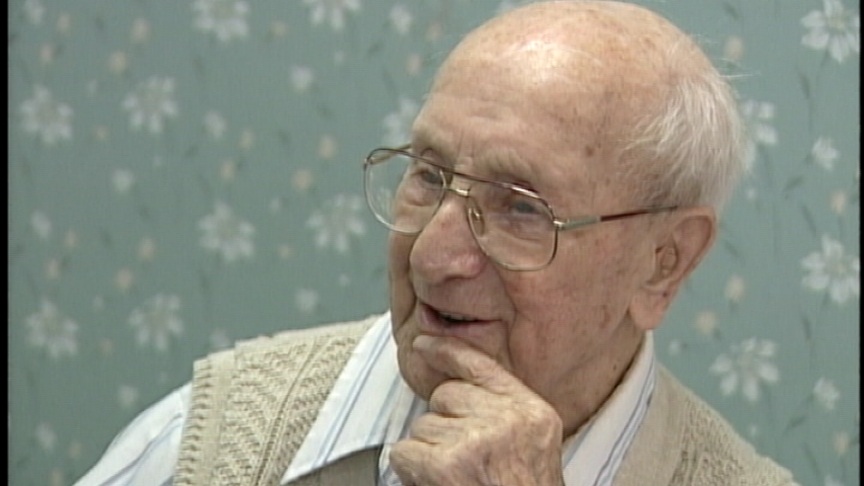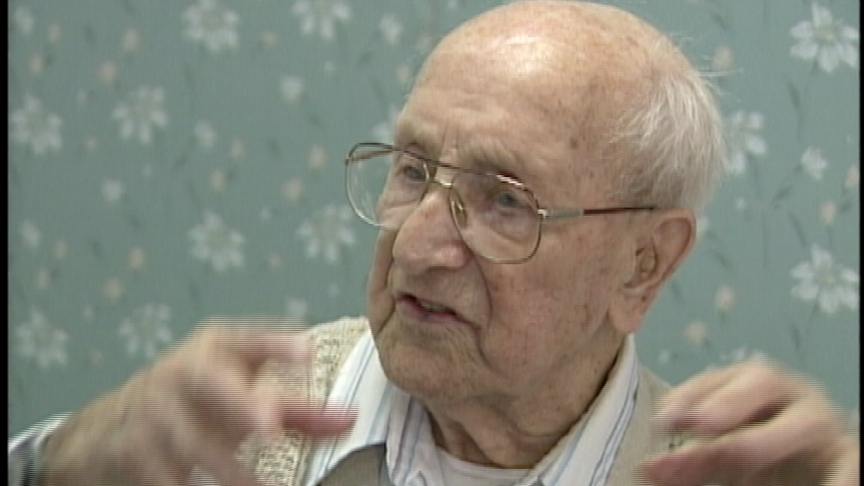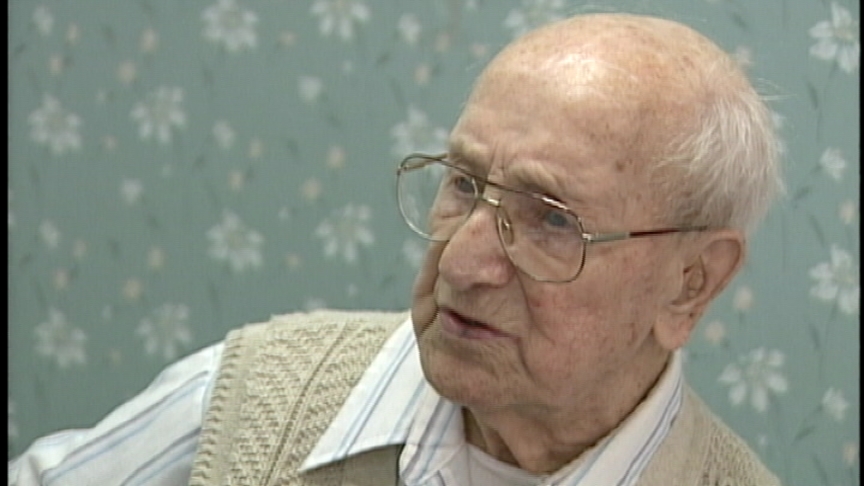Concussion Mines And Gas Shells
Heroes Remember - The First World War
Concussion Mines And Gas Shells
I'd say it was, the Hindenburg because
it was a real heavy, heavy built line, you know,
lots of guns and everything like that they had.
You didn't know when there was going to be
a gun pointed at ya and dugouts,
the dugouts was there, quite a bit, a few
dugouts and every once in a while you'd see
somebody pop up out of the dugout.
The Germans, they'd shove a mine down and
that would explode, that would bring them out
and usually they got out of the dugout alright but
they was done, they couldn't do anything else,
they'd just come out of the trench, come out
of the dugout and drop on the trench and
then they would swell right up.
This mine would go off, you know,
and explode and kill them.
But they would get, they would have enough
strength to get up out of the dugout and
get away from the next one.
This was all in that, in this run from the
Hindenburg line right through.
Long towards the end of it there,
the shelling was terrible.
That's all you got was shelling and gas,
I got an awful mess of gas, you see.
They would, a bunch of shells that hit you,
gas shells, you didn't know what was gas shells.
The first thing you know would be a couple of
gas shells and you didn't have your gas mask on.
You had to stop, put your gas mask on.
You would get a mouth full, three or
four mouth fulls of nice,
beautiful gas and that wasn't very good.
Related Videos
- Date modified:



